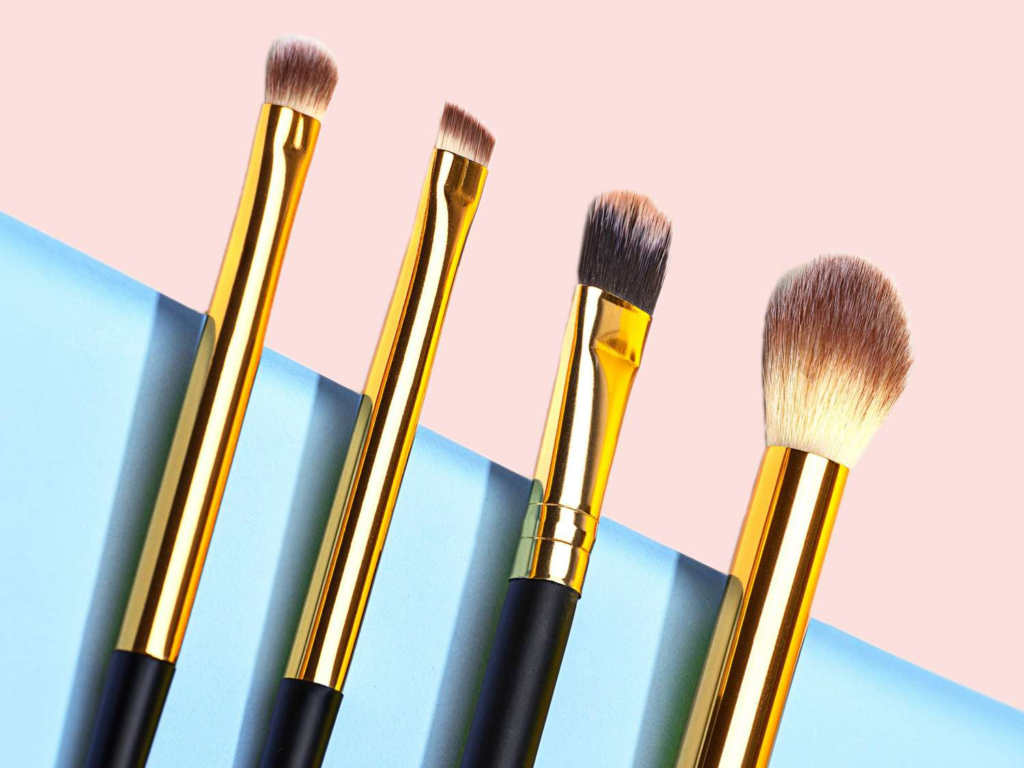In a world where entire stores are dedicated to eyeshadow, the options can be overwhelming. The vast variety of textures, hues, and brands might intimidate you, but fear not – embrace the diversity! With hundreds of options, you have the flexibility to select the best eyeshadow for your needs. From loose powder to compact powder and cream forms, eyeshadows come in every imaginable color.
Understanding Eyeshadow Textures:

Highly pigmented eyeshadows are usually sold as loose powder, offering intense color payoff. However, they can be tricky to control due to their loose form. Cream shadows are easy to apply but tend to crease faster than powder eyeshadows. For beginners, starting with a compact powder texture is recommended. Remember, you can always intensify the eyeshadow pigment.
Building Your Eyeshadow Palette:
While you don’t need dozens of colors to master eyeshadow application, having at least three shades in the same color palette is essential. A light, medium, and dark eyeshadow enable you to create various looks. Opt for neutral tones like browns or grays if you prefer a subtle effect. Otherwise, choose colors that resonate with your style and personality.
Mastering the Application Process:
Applying eyeshadow involves more than just choosing the right colors. Using the correct brushes and techniques is equally crucial. Invest in good quality makeup brushes as they provide precise application. Avoid sponge brushes, as they don’t apply pigment effectively.
Proper Brush Techniques:

- Use a stiff flat brush for applying eyeshadow across your entire lid, ensuring even pigment distribution.
- A soft or stiff dome brush is perfect for applying eyeshadow to your crease and blending it outward for a seamless gradient.
- A soft pencil brush allows precise application close to your lash line, including tricky areas like the inner corners of your eyes.
Application Styles:
- Fanned Eyeshadow:
- Apply the lightest color on the inner corners and just below your eyebrows using a stiff flat brush.
- Pat the medium shade over your entire lid with a flat brush.
- Contour your lid using the darkest shade and blend the colors for a seamless look.
- Rounded Eyeshadow:
- Apply the middle tone on your eyelid with a stiff flat brush.
- Accentuate the inner and outer thirds of your eyelid with the darkest eyeshadow using a dome brush.
- Blend the colors together for a smooth transition.
- Banana Style Eyeshadow:
- Cover your lid with the middle hue using a stiff flat brush.
- Darken your crease with the darkest eyeshadow using a pencil brush.
- Blend the colors, keeping the crease defined for depth and dimension.
- Smoky Eye Effect:
- Highlight the inner corners and under your eyebrows with the lightest shade using a flat brush.
- Apply the medium shade across your eyelid with a stiff flat brush.
- Create a smoky effect by applying the darkest color along your upper lash line and blending it for a seamless transition.
- Extend the darker shade to your bottom lash line, gradually lightening the color toward the inner corner of your eyes.
- Blend the shadows to achieve a flawless gradient.
Different types of eyeshadow applications
| Eyeshadow Application Technique | Description |
|---|---|
| Basic Eyeshadow Application | – Highlighter: Brow bone and inner corners.- Lid Color: Mobile eyelid from lash line to crease.- Crease Color: Crease of the eye for depth.- Outer V: Outer corner for a lifted effect. |
| Cut Crease Eyeshadow | – Cut Crease Line: Defined line in the crease, separating lid and crease colors.- Highlighted Brow Bone: Light eyeshadow on the brow bone. |
| Halo Eyeshadow | – Inner and Outer Corners: Dark shades creating a halo effect.- Center Lid: Light/shimmery eyeshadow at the center. |
| Smokey Eye | – Lid Color: Dark eyeshadow all over eyelid, blending into crease.- Lower Lash Line: Same dark shade along the lower lash line.- Crease and Outer Corner: Deeper shade in the crease and outer corner. |
| Gradient Eyeshadow | – Light to Dark: Eyeshadows from light to dark, creating a gradient effect. |
| Graphic Eyeshadow | – Creative Designs: Artistic and geometric patterns using various colors for unique looks. |
In this table format, each eyeshadow application technique is listed with its respective description for quick reference.
By following these tips and techniques, you can elevate your eyeshadow game and create stunning eye looks. Remember, practice makes perfect, so don’t hesitate to experiment with different colors and styles until you find what works best for you. Embrace the vast world of eyeshadows, and let your creativity shine!

